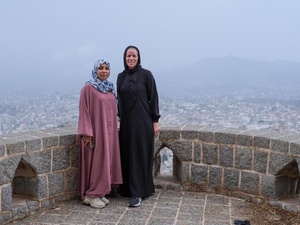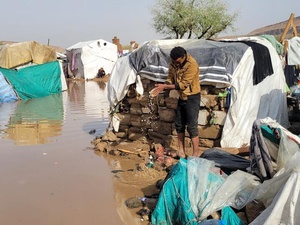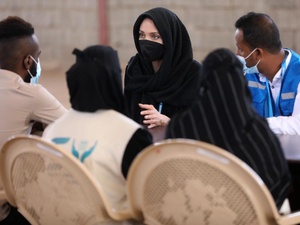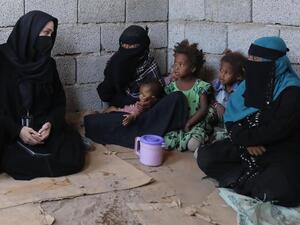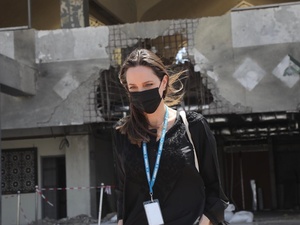UNHCR encouraged by prospects of improved access in northern Yemen
UNHCR encouraged by prospects of improved access in northern Yemen
UNHCR is encouraged by positive meetings we've had over the past days with the Yemeni authorities and representatives of al-Houthi on the need for improved humanitarian support to northern Yemen. The discussions, which took place in Sa'ada, were part of a mission of the High Commissioner, jointly with EU Commissioner Kristalina Georgieva, that ended this weekend. This was the first top-ranking UN visit to Sa'ada since the latest round of conflict, between August 2009 and February 2010.
The importance of better humanitarian access for northern Yemen is difficult to understate. The fragile situation coupled with slow progress in reaching the real peace agreement still hinders large-scale returns of displaced civilians and limits access by humanitarian workers to a seven kilometer radius around Sa'ada city. This means that there are no large-scale aid distributions in most parts of Sa'ada province and that many people who fled have to fend for themselves, almost a year after the ceasefire was signed.
Of the more than 300,000 internally displaced people (IDPs) forced to flee successive rounds of conflict between the government and al-Houthi forces since 2004, reportedly only 20,000 have managed to return home to date. Of the remaining displaced some 23,000 live in five UNHCR-run camps, while others stay with friends, relatives or among the host communities - many of them for a year or more. Resources are running low and despite ongoing assistance to IDPs, people are finding it extremely difficult to make ends meet.
UNHCR believes that improved stability and peace in the north combined with substantial reconstruction, de-mining and unhindered access for humanitarians would create conditions conducive for larger-scale voluntary returns and improve the situation of those affected by conflict.
High Commissioner Guterres also visited the port city of Aden and the Kharaz refugee camp in southern Yemen where he met refugees who recently fled Somalia. The latest data on arrivals by sea shows that 18,855 Somali refugees reached Yemen in 2010. This is significantly lower than the 32,988 recorded arrivals by sea in 2009.
Including other nationalities, total arrivals by sea in Yemen in 2010 were 53,382 compared to the record high of 77,802 in 2009. Nearly two out of every three arrivals were Ethiopian migrants escaping poverty and lack of opportunities in their own country (34,527 in 2010 compared to 44,814 in 2009).
Explaining the sharp decrease in arrivals, Somali refugees have told UNHCR that it is becoming increasingly difficult and dangerous to flee their country due to restrictions on movement imposed by militias in central and southern parts of the country. There are also many checkpoints on the road from Mogadishu to the northern port of Bossasso where people trying to flee board smugglers boats. These checkpoints are manned by different armed groups. The Puntland authorities are also exerting more pressure to arrest smugglers in Bossasso.
Yemen presently hosts some 190,000 refugees, virtually all of them Somalis. UNHCR reiterates the value of Yemen's generous, open-door policy towards Somalis, granting them refugee status automatically upon arrival.
Leaving Yemen, commissioner Guterres called on the international community to show more solidarity with Yemen's pressing humanitarian needs and urged more strategic engagement of the international community in promoting peace in Somalia and investment in areas where there is peace.


